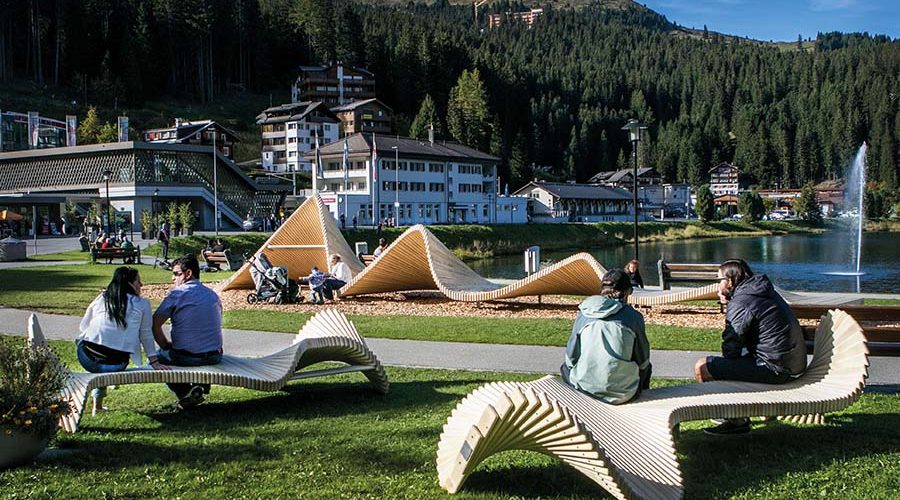The UK has experienced an increasing trend in contractor’s value-engineering quality hardscaping out of public realm projects. Often working to tight client budgets, combined with an aim of making the projects personally profitable, cheaper and poorer quality products are offered as a viable solution. These short-sighted decisions have a much wider long-term impact on the public, councils and the planet. With councils across the country declaring a climate emergency, it’s no better time for all involved to step back and open up a conversation about how priorities should be redefined, when long-term wider-reaching benefits of quality investments are needed in public space.
All Urban
The Landscape Institute has recently published ‘12 key asks of the new government’, a report with a section dedicated to ‘Design for people’. The report supports now clear evidence that landscape plays a key role in public health, with the potential to help prevent ill health and reduce healthcare spend. It addresses the importance of championing high-quality design, linking it to improved public health and appeals for a higher set of standards in the landscape industry. “Engraining place-making is key: well-designed places that respond to local character…promote connectivity…and are designed with sustainability in mind.”
Quality hardscaping elements within a public realm landscape play a vital role in achieving the above. Using the public bench as an example, it encourages all to be more active by providing everyone with the opportunity to rest, to spend longer in the fresh air, it can reduce isolation and improve mental health. These benefits are already widely accepted with benches being integrated into public spaces already, but why does the quality of the bench matter?
When addressing sustainability, investing in a higher quality bench dramatically extends the product life cycle. Using superior sustainable materials combined with expert manufacturing techniques produces benches which are more resilient to outdoor weathering and everyday use. Cheaper alternatives will rot earlier, rust sooner, as well as be less resilient to vandalism. A quality bench’s durability requires far less long-term maintenance, dramatically reducing long-term costs for the council. It can last decades longer, reducing the need to continually buy replacements, making them a sustainable long-term investment for the community and planet.
Achieving ambitions of high-quality authentic place-making requires a collective change in attitude towards other values such as beauty and innovation. Every community, whether it’s a city neighbourhood or rural village, has its own identity and the hardscaping elements within their shared spaces provide an opportunity for community expression. Bland, generic cheap designs are currently being installed across the country, and on very basic terms, they serve their purpose. But there is a real missed opportunity to add extra value to a place, reaffirming a sense of identity and pride for locals as well as making it more attractive for visitors. Choosing a distinctively designed bench which captivates the user, changing its colour to harmonise with the rest of the landscape, adding alterations to which help convey a unique story of the place; all these small details enrich a space and its community and deserve to be a defended.
These basic principles can be applied to all public furnishings. Whether it’s lighting, cycle racks, bollards, planters or litter bins; they all have the potential to transform and elevate our public spaces.
The climate emergency has provided a unique opportunity for everyone to redefine what matters. We cannot afford to pay the cost of not adopting a sustainable approach. Shared understanding, radical change and holistic methods are needed to improve quality within the public realm. Improving communication with landscape architects and defending quality product specifications will force contractors to install the quality products that provide long-term benefits for everyone.








